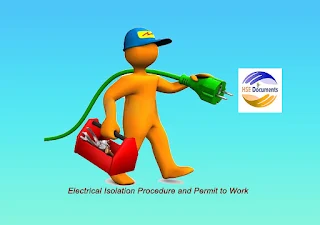What is Electrical Isolation?
Electrical Isolation means the disconnecting of the electrical supply to electrical installation, appliance, machinery, plant or equipment for safety prospective. Such type of isolation is conducted by particular operating devices that have been given within the electrical installation for isolation to make the electrical system functional, or dead. Once the electrical supply to electrical installation has been isolated, the sources of isolation must then be protected so that the appliance, machinery, plant or equipment cannot be negligently made life.
All means of electrical supply must be isolated and appliance, machinery, plant or equipment proved to be non-functional or dead prior work is conducted. The Electricity at Work Regulations within a state or country where an organization operates the business, it needs the isolation of appliance, machinery, plant or equipment systems to avoid dangerous occurrences. All appliance, machinery, plant or equipment must be non-functional prior installation or maintenance is conducted, and a system that is part of an electrical installation, appliance, machinery, plant or equipment from the source of supply to the equipment installed.
The Conduct of Safe Isolation
- Get permission to start the required or requested work/task/activity.
- Identify the means of power supply by utilizing a recommended, tested, and approved voltage indicator or test lamp.
- Determine that the recommended and tested voltage indicator or test lamp is working correctly as intended.
- Isolate the means of supply(s) appropriately.
- Always Secure the isolation by using multiple documented procedures such as to permit to work system (PTW).
- Prove that the isolation of appliance, machinery, plant or equipment systems is dead and non-functional by using an approved voltage indicator or test lamp.
- Be sure that the recommended and tested voltage indicator or test lamp is working properly, correctly as intended.
- Apply appropriate safety awareness, warning signs, posters and tagging system to let other people that the electrical installation, equipment, machinery or tool has been isolated, and dead (nonfunctional)
- After the system/equipment, installation, tool or machinery is proved dead, or non-functional, work can be started, prior any plant, appliance, machinery or equipment is inspected, maintained, cleaned or repaired, its sources of energy must be locked out and tagged out with an accountable personal having authority to do so.
The Aim of Isolation
The aim of isolating all of these energy sources and machinery is to ensure that an accidental 'release' of any type of energy does not happen, to control the occupational, health, environment and other hazards related with that task/activity/work, and to make sure that entry or contact with limited and restricted equipment, tool or machinery or areas is controlled.
The Electrical Isolation Procedure
Establishing or constituting a systematic approach to electrical isolation at various stages such as the individual, project and organizational level facilitates you to reduce risk and alleviate the chance of a dangerous accident occurring.
Stage-1
When substantial isolation starts, you must ensure that you have the proper documented procedure e.g. Permit to Work (PTW) to carry out the isolation. The Permit to Work should include some accustomed instructions about the electrical or other energy resources isolation procedure, and factors such:
- The date and time of work
- The scope of works being proposed
- The location of work
- The isolation purpose.
After analyzing the above-mentioned factors, your permit to work should document and explain which machinery, appliance, equipment or electrical tool will be isolated, prior the permit to work request and permit authorized sign off to start the work/activity.
The initial elements of the basic lockout-tag out procedure involve shutting down the electrical installation, appliance, machinery, plant or equipment which will be observed, inspected, maintained or repaired. In this initial step, identification of all relevant energy means as well as secondary sources, such as backup generators.
Use HSE Document’s Electrical Work Permit Form Template for your Electrical isolation procedures.
Stage-2
The second stage of isolation includes the identification of the isolation points single, system or the particular circuit. Once such a point or system of being isolated is identified, then you can isolate all the energy means. When the means of energy or power is disconnected, it's necessary that which of the machinery, circuit or a whole system and or point of isolation is locked off and tagged with the proper warning label and posters. Each person working on isolated electrical installation, appliance, machinery, plant or equipment should affix their lock or danger tags/posters, and each affixed tag should be for particular objective (locks and danger tags, out-of-service tags) and completely completed with the proper and authentic details such as dates and signatures. To prevent the accidentally switched on by any personnel, the lock key must be kept with assigned accountable personal or with yourself.
Stage-3
The final stage of electrical isolation procedure includes a final check and insurance test that the equipment is indeed properly isolated appliance, machinery, plant or equipment. This can be tested by trying to reactivate the plant or equipment or machinery. Other approved testing equipment can also be used to double-check the equipment is un-functional re 'dead'.







1.jpg)


No comments:
Post a Comment